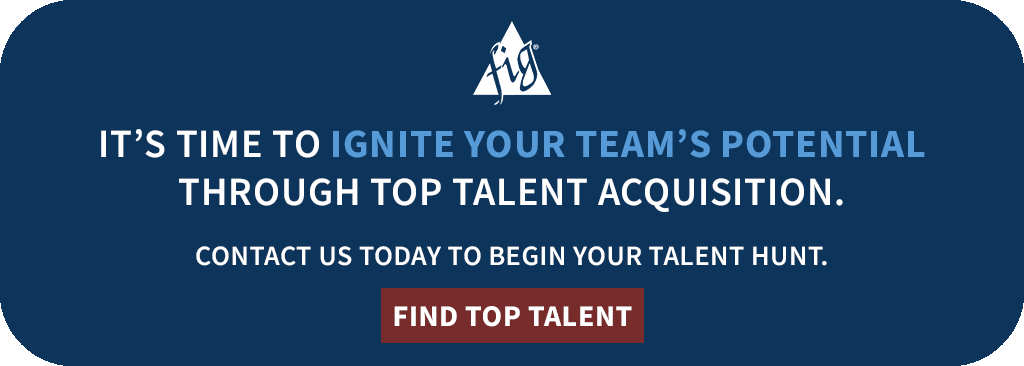Updated October 10, 2024, at 3:05 PM
Stop me if you’ve heard this before: A millennial, a baby boomer, and a Gen X-er walk into a bar…
That was meant to deceive you. You can’t stop me because our business management system today would have you believe that scenario is unimaginable. Great—now, I’m left trying to come up with the punchline!
For more than 70 years, our management philosophies—and our needs as employees—have evolved. From punching the clock and very little management, to the hay-day of Maslow and his “Hierarchy of Needs”, to our current state of employee engagement and driving success. Sprinkled in between are generational differences, growing public belief systems, and TED Talks; all fighting for space within the minds of today’s thought leaders. So, how do we imagine and execute a plan which will work for everyone? Or perhaps more importantly, how do we repeat a successfully implemented plan?
The answer? Transparency and disruptive innovation. Change is inevitable, and strong leaders can anticipate change, communicate with their team(s), and take decisive action. This will cause commotion to a business. However, it also allows for growth, optimization, and failure. Herein lies the challenge with the above scenario: the characteristics of each generation in the workplace incorrectly aligns with the functions we need them to perform.
The Baby Boomers are hard workers and the best communicators. Generation X is understood to be entrepreneurial and skeptical towards establishment. Millennials, on the other hand, want achievement…and they want it now! What you see (in most cases) is Baby Boomers viewing growth as a methodical transformation over time, as they communicate directly with Gen X who would rather reinvent than optimize, who then work closely with millennials who understand praise, but not failure. It’s clear why many industries have reported or forecasted a “gap in leadership” as one the highest concerns impacting daily and future decisions.
Rather than pass the blame to one another amongst the generations in the workforce, the companies who are making strides to solve this dilemma are encouraging each generation to learn from one another. They also understand that there is not a “one-size-fits-all” management, leadership, or motivation plan.
Multi-Generational Team Management
Successful leaders (and their companies) are disrupting the accustomed methods we’ve come to know for managing teams. This is done by customizing performance management plans based on the individual, not the job function or description. Everyone should be properly aligned to the strategic initiatives or defined goals of an organization, but how we get there typically requires a masterful orchestration of assigned tasks, projects, and activities. Check out these truths and tips that can be helpful when aligning your multi-generational team.
Baby Boomers
- Want to manage and be managed—they’re more responsive to a goal-based environment where achievement is rewarded and recognized.
- Do well with short and long-term goals; so, communicate why each goal has been set, then inform others of the goals.
- Enjoy time and space to provide updates on their progress. When achieving positive results, they enjoy getting recognized for their value and work.
- Refrain from assigning projects or goals as part of a change to a process, function, or program. If possible, gain acceptance by including them in pre-project discussions.
Generation X
- Want to lead and be led, so consider a task or assignment with rewards based on solutions to short-term problems as part of a larger goal.
- Rewards should be flexible and relate more directly to the individual, as well as how that reward will affect their resume/career.
- Give assignments in ebbs and flows with the understanding that down time will be used to seek and complete tasks deemed a priority by them, with oversight by management.
- Set regular performance meetings with them. When possible, involve them in change-based or “new” projects, functions, or programs to maximize output.
Millennials
- Need to be motivated. Give them a purpose to their work so that others may applaud the results and be motivated to join the cause themselves.
- Give tasks and assignments to a team to yield best results, but publish and praise individual results. Additionally, stay away from giving singular tasks within a single project.
- Design a function around multi-tasking with success defined by short-term targets or goals.
- Implement points or leaderboards to satisfy their need for competition and achievement.
- Oversight will be important, as will the transparent communication of expectations and timelines/deadlines.
- Provide hands-off management during the assignment for the best results.
- Although not always possible, flexible work schedules or spaces will provide the best motivation.
- Communicate in terms of a global perspective and include (or assign) an outlined mentorship program to aid in their development.
All these actions should be communicated (and supported) transparently throughout your organization. This will require astute documentation and reporting skills by leaders (and related downlines) to maintain focus on the goal at-large.
Final Thoughts on Leading Multi-Generational Teams
To help clear up any further confusion, try to think of these three generations as positions on present-day football teams: Baby Boomers are your linemen—blockers and tacklers. Tell them and others on the team where they need to go and why; and the job will get done.
Generation X is your quarterback—they’re leaders who also like the freedom of improvisation and innovation.
Millennials on the other hand, are the best wide receivers we have ever seen–flashy and demanding, yet they are the present and the future.


